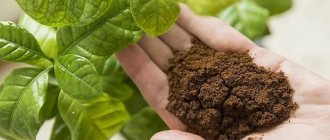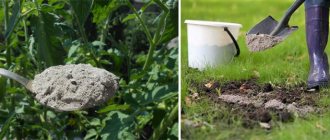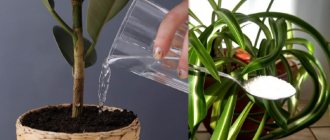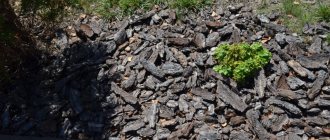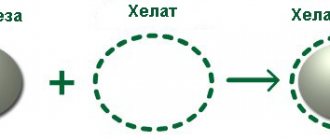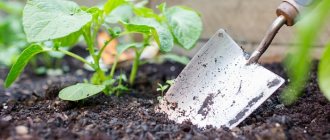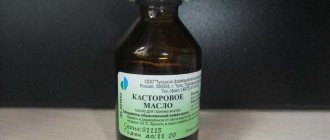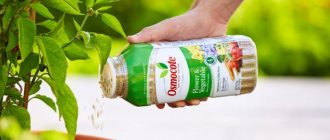Composition and beneficial properties of ash
Wood ash for indoor flowers is one of the most popular fertilizers. It contains the nutrients they need, such as phosphorus and potassium. In addition, ash reduces the acidity of the soil, so it should be used with caution for houseplants that prefer acidic soil. But for those crops that require neutral or alkaline soil for abundant growth and flowering, fertilizing with ash will be useful.
Ash contains more than 30 microelements necessary for home ornamental plants. It contains:
- potassium, which stimulates plant immunity;
- magnesium, necessary for photosynthesis;
- phosphorus, which promotes long flowering;
- molybdenum, calcium, boron, manganese, zinc and many other trace elements.
It is thanks to this rich chemical composition that ash fertilizers are beneficial for the soil. For example they:
- make the soil permeable to oxygen and water;
- destroy pathogenic microorganisms in the soil;
- prolongs the flowering of plants and increases the number of flower stalks;
- reduce soil acidity;
- actively promote the development of nitrogen-fixing bacteria in the soil;
- increase plant resistance to unfavorable conditions;
- remove harmful impurities and excess water from the soil.
Feeding indoor flowers with ash is necessary for abundant flowering. Thanks to ash fertilizers, ornamental crops become brighter, more buds are formed and flowering lasts longer, so house plants become more attractive and healthy.
The effect of using ash directly depends on the wood from which it is obtained. The best ash is considered to be birch and pine. It contains a lot of calcium. But the champion in terms of its content is the ash obtained by burning oak wood. There is a lot of phosphorus in buckwheat ash, and wheat ash contains 18% potassium and 9% phosphorus. Ash from peat is enriched with calcium oxide, and burnt grass contains a large amount of potassium. The product obtained from burning the stems and leaves of ferns and sunflowers contains a lot of phosphorus and potassium. The disadvantage of ash is the lack of nitrogen, which evaporates when grass or wood is burned.
IMPORTANT! Deciduous ash contains a large amount of calcium, while coniferous ash contains a lot of phosphorus. More potassium is obtained by burning young branches and trunks.
What is not recommended to do
To ensure that wood ash does not lose its working qualities, it is recommended to store it exclusively in a dry place, protecting it from the negative effects of moisture. Frequent use of organic residues for feeding indoor flowers is contraindicated, since the alkaline reaction increases and their ability to absorb useful components decreases.
In addition, you should not use rust-colored ash; it has a high iron content, which slows down the absorption of phosphorus.
When working with organic compounds, you should use protective gloves and cover your face with a mask. It is not advisable to use ash for flowers that do not like it (rosalia, camellia and other varieties growing in soil mixtures with high acidity). After treating the bushes with a working solution against parasitic individuals, they are not allowed to be placed on a windowsill under the scorching rays of the sun and irrigated with water for the first 3-5 days.
Adding wood ash to the soil makes it possible to enrich the soil substrate with nutrition and protect home crops from attack by harmful individuals and diseases. The main thing is to apply it in doses and no more than 3 times a year. Otherwise, the general condition of the flowers will deteriorate and they may die.
How to get ash for plants
Ash for flowers is obtained from any natural material that supports combustion. The product used is the product generated from burning wood in stoves or fireplaces, as well as on an open fire. The main thing is not to throw glossy magazines, plastic, glass, rubber and other household waste into the fire. Only branches and trunks of deciduous and coniferous trees, straw, grass, leaves of bushes and trees are used. Therefore, it is highly not recommended to collect ashes at other people’s picnic sites. Combustion products can be toxic to house plants and humans. You should especially not use rust-colored ash as a fertilizer, which contains a lot of iron, which can harm plants, since iron interferes with the absorption of phosphorus.
Using ash in the garden
You can fertilize garden trees and shrubs in your dacha with ash.
- Before planting young seedlings in the soil, 1-2 kg of ash mixed with soil can be added to each hole; from the same calculation, ash is added before digging the ground.
- Grape plantings can be fed up to 4 times per season (May, July, August, September). Treatment with ash solution is carried out in the evening, its concentrate is diluted in a ratio of 1:5.
- Ash will be an excellent fertilizer for black currants. Under each bush you need to add 3 cups and immediately embed them in the soil.
Ash is great for feeding cherries, cherries, apple trees, pears, and plums.
If you plan to plant strawberries or wild strawberries in the garden, then in the fall you should add ash to the site of future planting at the rate of 1 tbsp. per 1 sq. m. And in the spring, before mulching the soil, you can sprinkle a little ash between the rows of berries before watering. This manipulation can be repeated during the period when the first berries appear. Before the strawberries bloom, it is recommended to feed them with an ash solution, to which it is recommended to add 2 g of potassium permanganate and boric acid, diluting it all in a large bucket of warm water. Spraying should be done in the early morning or evening.
What plants can be fed with ash?
Wood ash is used as fertilizer for indoor plants if they are deficient in minerals. These flowers and ornamental shrubs develop poorly, are stunted, and have signs of disease.
The need to fertilize with wood ash can be determined by the appearance of the plant:
- deformed leaf blades, painted white, crumbling buds and flowers indicate a lack of calcium;
- lack of aroma of flowers, drying out of the edges of leaves indicates a lack of potassium.
Feeding home flowers with ash is useful for plants that prefer alkaline or slightly acidic soil. Roses, peonies, pelargoniums, clematis, and lilies respond well to it. But ash is not suitable for anthurium, azalea and calla lilies, since these representatives of the plant world prefer acidic soils.
How to add ash to indoor plants
They feed houseplants with ash, making an aqueous solution from it, using it in dry form at the root, or spraying it on damaged foliage. To prepare a solution, take 50 g of ash per 1 liter of water. It is poured into a glass container, poured with boiling water and left to infuse for 3 days. This is necessary so that all the beneficial substances contained in the ash are completely dissolved in the liquid. The resulting infusion is watered at the roots of indoor plants. For one watering, large flowers require 1.5–3 liters of fertilizer, small plants - 0.5 liters.
In dry form, fertilizing with ash for indoor plants is used closer to winter or after flowering. The ashes are sifted, freeing them from unnecessary impurities, and scattered over the surface of the soil. Then the soil is loosened and moistened abundantly. Dry ash not only enriches the soil with useful microelements, but also effectively works against root rot.
To repel aphids, spider mites and other pests, dust with ash. The flowers are first sprayed with water, and then the leaves, stems and ground part of the plant are sprinkled with sifted ash.
The use of ash infusion for root feeding
Even a novice gardener can prepare an effective fertilizer for potted indoor plants that prefer neutral and slightly alkaline soil. It is enough just to dilute 2 tablespoons (without a slide) of sifted plant ash in 1 liter of water, let the liquid stand for three to four days, shake the suspension thoroughly, and, voila, your valuable root fertilizer for flowers is ready.
Apply ash solution under home flowers once every 2 weeks throughout the year. Due to the alkaline properties of the working solution, fertilizing is never used when caring for plants in acidic soil, such as begonia, azalea, camellia, fuchsia, cyclamen, monstera, etc. Make sure that all of your seedlings that you plan to regularly fertilize with lye ash prefer soil mixtures with neutral acidity (pH 5.5 - 6.5).
It should be noted that there is practically no nitrogen in the ash, which stimulates the growth of the vegetative mass of seedlings, therefore nitrogen fertilizers, which are used during the flowering period of cultivated plants and their emergence from the dormant period, must be alternated with phosphorus-potassium fertilizers, that is, ash fertilizers.
You should not simultaneously water the bushes with ash and any liquid fertilizers with nitrogen, both mineral and organic, for example, a solution of ammonia, ammonium nitrate, urea, ammonium sulfate or fermented infusion of nettle and bird droppings, since ash lye leads to rapid destruction nitrogen. Take a break of at least 1 week between adding ash and other fertilizers.
Beauty on your windowsill all year round!
Compatibility with other fertilizers
Ash for indoor plants can be used as an additive to complex fertilizers. But you should not apply it simultaneously with nitrogenous fertilizing or if 15–30 days have not passed after their use, otherwise there will be no benefit from fertilizing. Nitrogen neutralizes the potassium-phosphorus base of ash fertilizers.
Ash can be combined with peat, compost, and humus. Mix it with potassium and sodium nitrate. Add herbal infusions of mullein to the finished fermentation. But you can’t mix it with fresh manure, because it contains a lot of ammonia.
Residues from burnt plants, shrubs and trees are an excellent and, most importantly, inexpensive fertilizer for house plants. Thanks to it, the earth literally comes to life, becomes loose, light and enriched with useful substances. Indoor flowers respond well to such fertilizing with abundant and long flowering.
Ash against pests
Gardeners use ash when there is a need to destroy and repel pests such as aphids and slugs. Slugs and snails will not be able to get close to the plant if a ring of ash is sprinkled around it. For outdoor plants, this method is not the best, since it is unlikely that it will be possible to keep the dust dry for a long time, but if the plantings are in a greenhouse or greenhouse, then this method is acceptable.
Dry fly ash also helps get rid of wireworms and nematodes, and to make it last longer, you need to spray the flower leaves with water before dusting or carry out all the steps until the morning dew has disappeared.
House flowers can be protected from aphids and various fleas by dusting the bushes with ash, wiping their leaves with an ash-soap decoction, or spraying them with the same. Wet processing should be done in the evening in dry weather. In the sun, treated leaves can burn, and high humidity will not allow the solution to stay on the plant until the pests die. This also applies to indoor flowers: the treatment should be carried out in the evening or on a cool day, but after the procedure the bushes should not be kept in direct sunlight and should not be sprayed with water for several days. If necessary, the process is repeated after two weeks.
